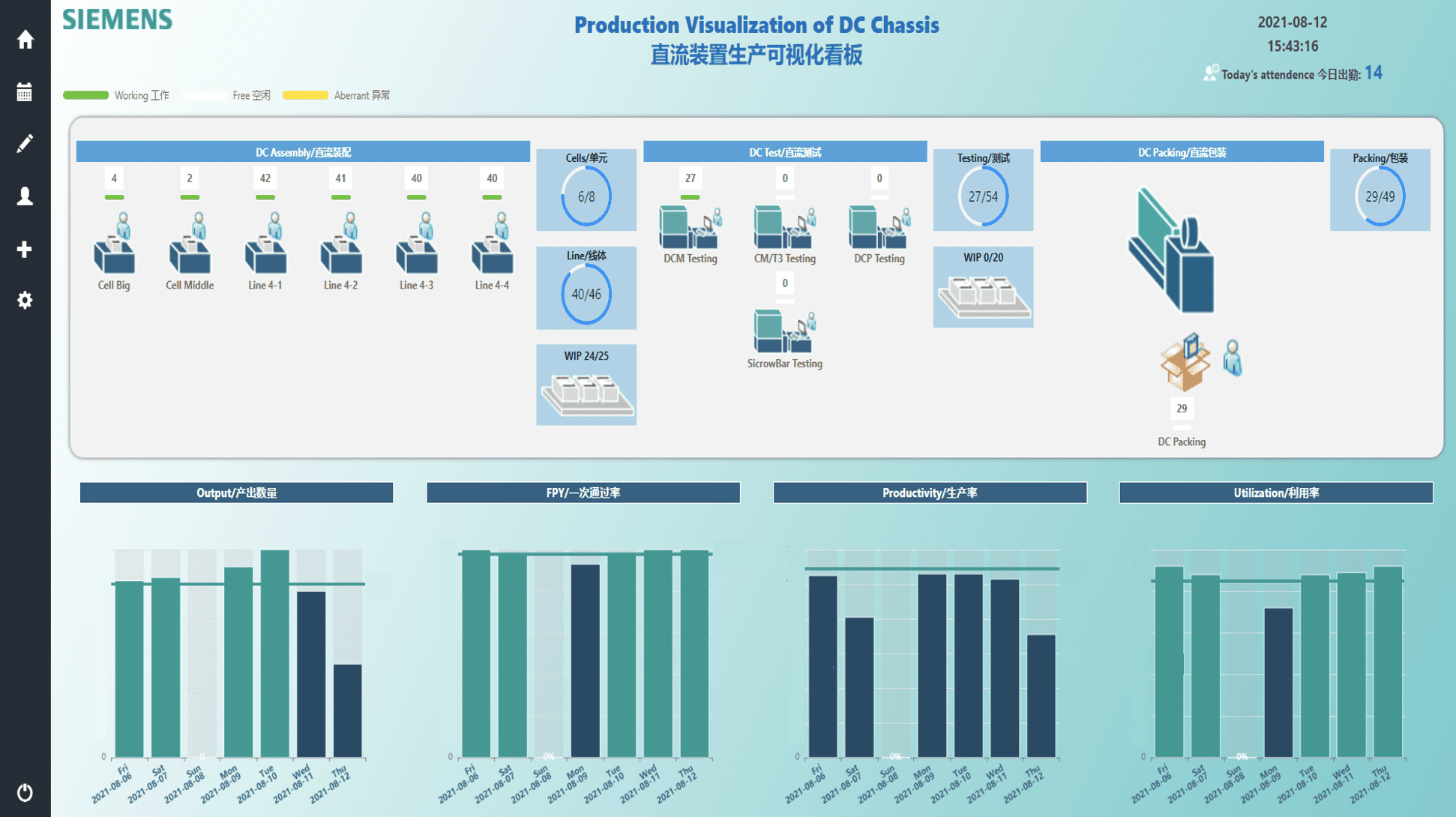Real-Time Data Visualization Dashboard Enables Smarter Production Management
Siemens Electrical Drives Ltd. (SEDL), located in Tianjin, is a joint venture between Siemens China Ltd. and a local partner. SEDL serves as Siemens’ global manufacturing center for DC products, including SINAMICS DCM and SINAMICS DCP, providing international-quality solutions for digital and analog drives.
Historically, production indicator reports were created manually, taking about a week to compile raw data into presentable formats. This approach was labor-intensive, time-consuming, and lacked real-time accuracy. Challenges included:
- Non-standardized data sources requiring significant manual processing.
- Report presentations limited to static PowerPoint slides, which were neither convenient nor intuitive.
- Delayed access to production status, hindering timely decision-making.
SEDL sought a solution to display real-time production data on a single dashboard, automate the data collection-to-report process, and improve overall efficiency.
Lowering Complexity with Low-Code
Through an internal knowledge-sharing session, SEDL learned about successful low-code applications in other Siemens factories. Inspired by these examples, a cross-departmental team comprising finance, IT, and production experts initiated a low-code project to address their challenges.
Goals for the low-code project included:
- End-to-end data analysis and visualization.
- Real-time display of assembly, testing, and packaging data on an integrated dashboard.
- Smarter, more flexible production management.
- Automated data input to replace manual file handling.
- Modular application design to shorten development cycles.
Within just over a month, the project team developed the “DC Device Production Visualization Dashboard.”
The system integrated data from the MES production line, attendance records, and the local SQL database. The dashboard provided real-time visibility into every step of the production process, from assembly to testing to packaging, displaying statuses for each workstation.

After implementing the dashboard, SEDL reported a 4% increase in productivity and a 3% improvement in resource utilization. The system enhanced production efficiency, reduced costs, and improved overall satisfaction.
Impact and Key Outcomes
The low-code development practice brought significant benefits to SEDL:
- Real-time monitoring of DC production status.
- Integrated data from multiple sources for streamlined management.
- Accelerated decision-making processes.
- Improved productivity and operational efficiency.
Using Mendix, the project adopted a modular and iterative approach, reducing system complexity and supporting business growth more effectively. A project that would traditionally require six months was completed in just one month using low-code development.
Empowering Business Experts with Low-Code
This low-code journey enabled SEDL to achieve its application development goals while fostering broader organizational benefits:
- Long-term cost savings and efficiency improvements.
- Enhanced collaboration across departments and disciplines.
- Innovation driven by Mendix, inspiring internal learning and creativity.
Looking ahead, Siemens factories plan to expand low-code applications to additional production lines, reshaping the way enterprises build digital solutions. Mendix empowers businesses to accelerate development, overcome bottlenecks, and maintain security, quality, and governance standards, paving the way for a digital future.